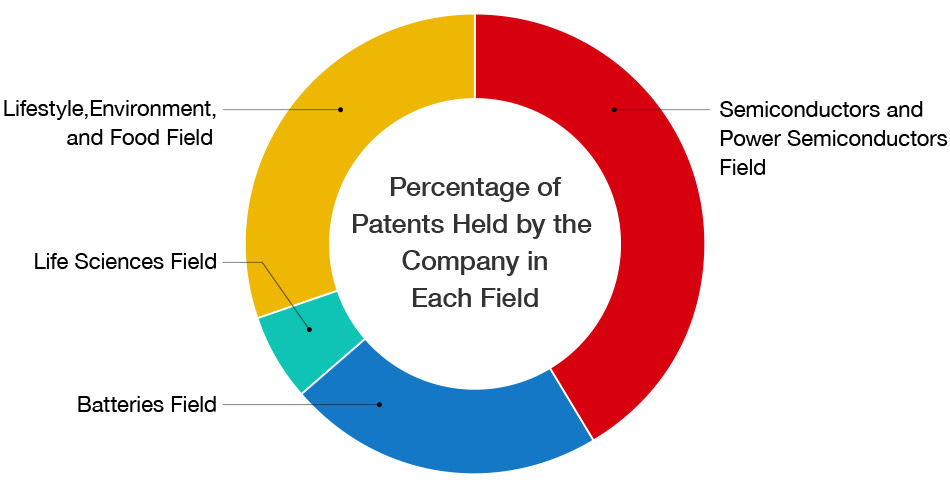R&D
Research & Development Structure
Research structure that leads to the solution

Central Glass has built up a system that can provide higher value-added solutions by identifying the true issues faced by our customers and society and promoting research and development that leads to the solutions to such problems, matching the technologies we've cultivated in our R&D with their needs.
Our R&D system

Fundamental Chemical Research Center
The Fundamental Chemical Research Center aims to develop new products and technologies by applying Central Glass's core technologies (fluorine compound products and glass products), which we have cultivated over many years, and by fusing these technologies to create our original technologies and to provide solutions.
Applied Chemical Research Center
The Applied Chemical Research Center is responsible for research and development of next-generation functional materials by acquiring new technologies, while moving forward with application development based on the technological capabilities Central Glass has cultivated over many years in the fields of electronic and functional materials, energy materials, and agricultural materials.
New-STEP Research Center
The Center is intensively responsible for corporate research in new areas to create new businesses for Central Glass, and aims to develop materials utilizing the latest development approaches, such as computational science, with a view to contributing to the resolution of social issues facing the world and mankind in the medium to long term, such as life science, carbon neutrality, and compliance with PFAS regulations.
- New-STEP = New-Stage Exploring Program
Intellectual Property
To maximize business earnings, the Business, Research, and Intellectual Property departments work together to advance IP strategies focused on the following two points.
Preventing Infringement of Intellectual Property Rights
We carry out surveys to prevent infringing on other companies' intellectual property rights and incorporate the results into our R&D and business activities. We ensure respect for the intellectual property rights of other companies through Design Review/Stage Gate meetings. These meetings, involving the three departments, are held as R&D and business activities progress.
Aligning our Application Strategy with the Business Strategy
We organize and visualize the status of our own and competitors' intellectual property rights through mapping and other methods. The three departments then determine which IP rights to acquire based on business trends and R&D progress. The three departments regularly discuss which IP rights to acquire and track its progress to ensure no opportunities are missed.
In BtoB, understanding downstream technologies in the commercial process is crucial. The research department is enhancing product evaluation systems and analytical technologies in support. The IP division collaborates with the research division to discuss these technologies from the perspective of acquiring IP rights. These discussions help secure IP rights for downstream technologies.
Percentage of Patents Held by Each Field
The semiconductor and power semiconductor fields, along with the battery field, are our two main R&D focuses, together accounting for about 65% of total patents held. We periodically review our held patents to adapt to changes in the business environment.

